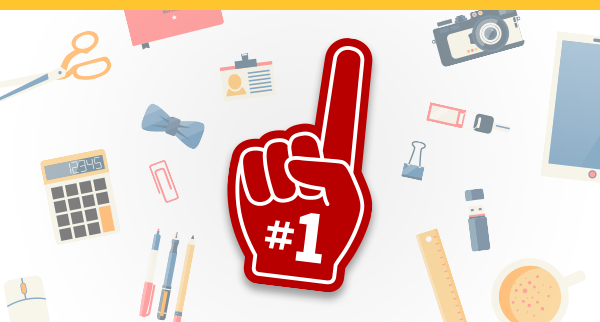 The Ministry of Common Sense is (almost) here : Jan 2021
The Ministry of Common Sense is (almost) here : Jan 2021

This article appeared in my newsletter earlier this week. If you’d like to receive similar updates sign up here now.
Branding is all about one thing.
It’s not about marketing.
It’s not about endorsements or celebrities.
It’s not about colors or fonts.
At its core, branding is about identifying and magnifying differences.
There is so much competition out there. There are literally millions of companies. What is the ONE thing that makes you stand out from everyone else? You need to know the answer to this question.
But you won’t find it in a 100-page strategy guide. It won’t emerge from during a high-level boardroom discussion. It won’t be revealed at your corporate retreat.
The important differences, real or perceived, live in the minds of your consumers. If you want to discover what they are, then you need to go spend time with the individuals who know what makes you so unique.
Trust me on this one. It was thanks to these intimate, face-to-face interactions that Devassa, a well-known brand of Brazilian beer I worked with, was able to turn around its brand. The key insight? Well, I can’t share that here, but it came from closely watching our consumers and understanding how they poured their beer.
Similar experiences helped LEGO revitalize its business and Lowe’s supermarkets reinvigorate their brand.
In fact, I’ve built my career on learning how to interact with consumers, and I’ve been able to do it because most major corporations have forgotten how! Decision-makers have become so removed from their customers, that most even see interacting with them as a waste of time! You can imagine, then, that the first thing that I often suggest to my clients (especially the CEOs) is almost always the same: spend time with 10 or 20 real customers and listen to their needs.
In fact, this is my number one piece of business advice. It’s so important, I’ll say it again: spend time with 10 or 20 real customers and listen to their needs.
Telling a business to spend more time with customers does feel a bit like having to remind someone to breathe, but as you know, with mindfulness and meditation there’s now a multibillion dollar industry doing that, too! Yes, there is a need to learn how to interact with your customers and I spend a lot of time teaching companies to do it. You can get similar training from my book Small Data where I outline these steps and refer to them as the 7Cs. There’s a lot more to learn, but if you want to start thinking from a customer-centric paradigm, start with these activities when you meet with them:
Collecting – Do everything you can to remove the filter that keeps you from seeing what is really going on. This involves finding a diversity of viewpoints including both introducing the brand to fresh sets of eyes and speaking to those who may use it on a day-to-day basis.
Clues – No piece of data is wasted, but don’t just list what you see, look for what’s missing because often that’s just as important as what is present. Remember, too, people’s ideal selves and actual selves can clash and you need to be able to separate the clues accordingly. Do they have a jump rope because they work out, or do they have it because they want to work out?
Connecting – Ask yourself: are there any similarities among the clues you have accumulated? Are the clues beginning to tilt in one direction?
Causation – It’s time to gather your findings. It’s essential to put yourself in the shoes of the customer. If you were he or she what would you want? How would you feel? Get an even better picture by returning to collecting and ask respondents what they think about your findings.
Correlation – Has a life event changed how respondents interact with your product or service? Don’t just ask them directly. Often these changes are best monitored by their friends and family.
Compensation – Having found evidence of a shift, it’s time to distill it to its most emotional essence: desire. What is the desire that is not being fulfilled? What is the best way to fulfill it?
Concept – Take your observations home and mull them over, but remember ideas are less likely to come under pressure, so go for a bike ride, swim, or take a walk along the sand and let the crazy thoughts combine into great new ideas.